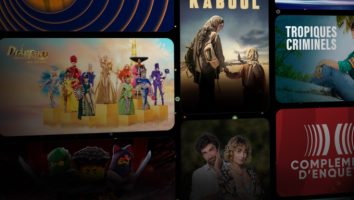When Mark Freedman first saw a Teenage Mutant Ninja Turtles comic book, little did he know how it would change his life. What most people saw as a cult comic, he saw as a blueprint for a licensing bonanza.
Freedman, president of Surge Licensing, became the architect of one of the most successful licensing programs in children’s toys. Combining a clear vision for product expansion, promotional partners willing to gamble on an unproven commodity and a little bit of luck, sales of Turtles-licensed products have amassed over $3 billion dollars wholesale worldwide.
The pizza-chomping her’es in the half shell were the creation of artists Kevin Eastman and Peter Laird, who developed the idea in 1984 to satirize the comic book industry’s then fascination with mutants, teenagers and combat. In 1986, they begun to publish the comic regularly and it built a loyal following.
At the time, comic books were not thought of as highly licensable properties. However, when Freedman, who had helped developed such properties as The Flintstones and Scooby-Doo, first looked at the comic, he flipped over its potential.
‘It had all of the necessary elements to create a toy line,’ Freedman said. ‘The comic book was really a blueprint for a toy line. Every male action line consists of figures, vehicles, accessories and playsets-and they were all in the very first comic. So I knew it was something very exciting. And, these were superhero turtles, and that was the big difference. It was funny and humorous, but also displayed an attitude.’
In 1986, Freedman acquired the rights to be the property’s exclusive worldwide licensor. His first step was to develop it as a toy. ‘In the children’s business, the toy deal is the most important license. It is the barometer of the health of the property,’ he said.
The problem was convincing a manufacturer to take a chance on a toy line featuring untested characters with limited exposure that were unlike anything else on the market. Freedman found a master toy licensee willing to take that gamble in Playmates Toys.
‘For every deal that’s done in the toy industry, there are probably about 300 that didn’t get done,’ he said. ‘It’s sort of a miracle that a company chooses one line of toys over another. Back then, the Turtles were a high concept-there was nothing behind it except a very successful independent comic book. But it was the concept, I think, that turned on Playmates. They knew that it was different than every other action figure out there and stood a chance to be looked at because it was just so different.’
His next step was to get entertainment licensees. He attracted Group W to fund the production of a five-part animated syndicated miniseries which ran in late 1987. The success of the short series encouraged Group W to produce 13 weekly half-hours for the fall of 1988 and more for a weekday strip the following year.
With steady growth and exposure in 1989, the Turtles were gaining strength in product sales. Had it remained solely a syndicated series, Freedman believes it would have still become the number one boys toy. Wanting to further expand its audience, he set out to make a deal for a live-action Turtles movie.
In early 1989, he met with Golden Harvest. They shared his vision about doing a live-action film, but what finally caused them to invest in it was simple economics. Golden Harvest was Hong Kong-based, as was Playmates Toys. Golden Harvest could literally go across the street and see the volume of Turtles toys Playmates was producing. That convinced them that there was something there. When Teenage Mutant Ninja Turtles was released in March of 1990 and went on to gross $137 million domestically, the property exploded and, as Freedman says, ‘all hell broke loose.’
Although numerous companies approached him with ideas for Turtles products, Freedman avoided the temptation to overlicense. For example, Playmates was, and still is, his only toy licensee. ‘You can’t control the quantities of merchandise shipped, but you can control the quality and the types of products that you license. I don’t license products that I think will cannibalize existing products or will oversaturate the marketplace.’ Freedman knew that if he could keep the amount of licensees to a minimum, he wouldn’t run into the problem of having shelves overrun with extra product.
In the 1990s, the Turtles have starred in two other successful live-action films, and air on CBS’ Saturday morning line-up and on USA Network. As the marketplace changes, Surge is reaching out to new media to connect its property with its fans. A Turtle Web site gives children a chance to write to their favorite her’es and provides Surge with a database to send fans information about upcoming events, shows and newly licensed merchandise.
At Toy Fair, Freedman hopes to announce a deal for a fourth live-action Turtles film, new TV episodes, new comic books and his plans to merchandise around them.
As the Turtles have evolved from cult favorites to phenomenon to an evergreen property, Freedman insists that his licensees develop fresh product lines because he knows that children always like new things. Last year’s lunch box may have sold strongly, but a child looking for a new lunch box for the new school year will want a new design. By staying aware of what interests children, and meeting those needs, Freedman and his licensees will continue to make Turtles products viable in the marketplace.





















